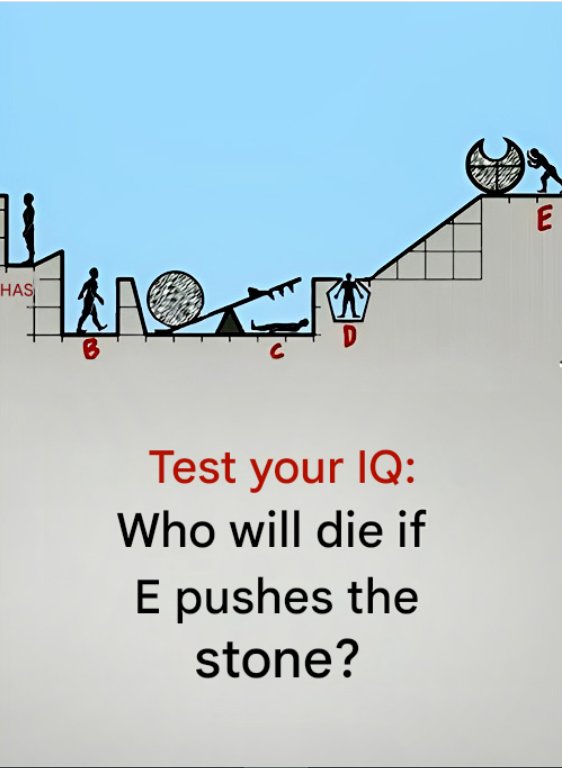ADVERTISEMENT
This scenario is the crux of many real-life challenges, puzzles, and conundrums. The idea that 96% of people can’t find the answer reflects the disparity between individuals’ problem-solving abilities. But why is it that such a large percentage struggle with finding the correct answer? Are we all simply not “wired” to solve certain types of problems, or is there something more to it?
#### **The Puzzle of Human Perception**
The human brain is incredibly complex. While it is capable of processing vast amounts of information, it’s also prone to cognitive biases, assumptions, and shortcuts that can lead to errors in judgment. In many cases, when faced with a puzzle or challenge, people rely on prior knowledge, experience, or assumptions, which can limit their ability to see new solutions.
For example, when presented with a puzzle, most people approach it with the belief that there is only one “correct” answer, based on the information they’ve been given. This mindset can create mental roadblocks. Often, we are so set in our thinking that we fail to notice alternative solutions. A study in cognitive psychology known as the “functional fixedness” effect explains this phenomenon. It describes how individuals tend to see objects and tools as having only one fixed purpose, and this limits creative problem-solving.
Take, for instance, the famous “candle problem” from psychologist Karl Duncker’s experiment in 1945. The challenge is simple: You are given a candle, a box of matches, and a box of thumbtacks. The task is to attach the candle to a wall so that it can burn without dripping wax on the floor. Most people, when asked to solve this, instinctively try to attach the candle to the wall with thumbtacks. However, only a few individuals manage to think outside the box and realize that they can use the matchbox as a holder for the candle, affixing it to the wall with tacks. This example perfectly illustrates how the human mind can become “fixed” in its thinking, which prevents people from recognizing the solution that’s right in front of them.
This is why so many people fail to find the correct answer to a seemingly simple puzzle. Their brain’s natural tendency is to follow familiar patterns, which leads them down paths that seem reasonable but are ultimately ineffective.
#### **The Power of Perspective: Seeing Beyond the Surface**
One of the keys to solving difficult problems lies in shifting your perspective. When you approach a problem, especially one with a high failure rate, it’s essential to step back and ask yourself: “What else could this be?” This mindset encourages you to question assumptions and consider alternative solutions. By shifting your focus and looking at a problem from a different angle, you can uncover answers that others may overlook.
Take, for example, the world of optical illusions. These visual puzzles often trick the brain into seeing one thing, only to reveal something entirely different once you change the angle or context. A well-known optical illusion is the “young woman/old woman” image, where a single drawing can be interpreted as either a young woman’s face or an old woman’s profile, depending on how you look at it. The ability to see both perspectives in the same image reflects the importance of flexibility in problem-solving. When you encounter a challenge in life, remember: the first answer you see may not always be the final one.
For Complete Cooking STEPS Please Head On Over To Next Page Or Open button (>) and don’t forget to SHARE with your Facebook friends
